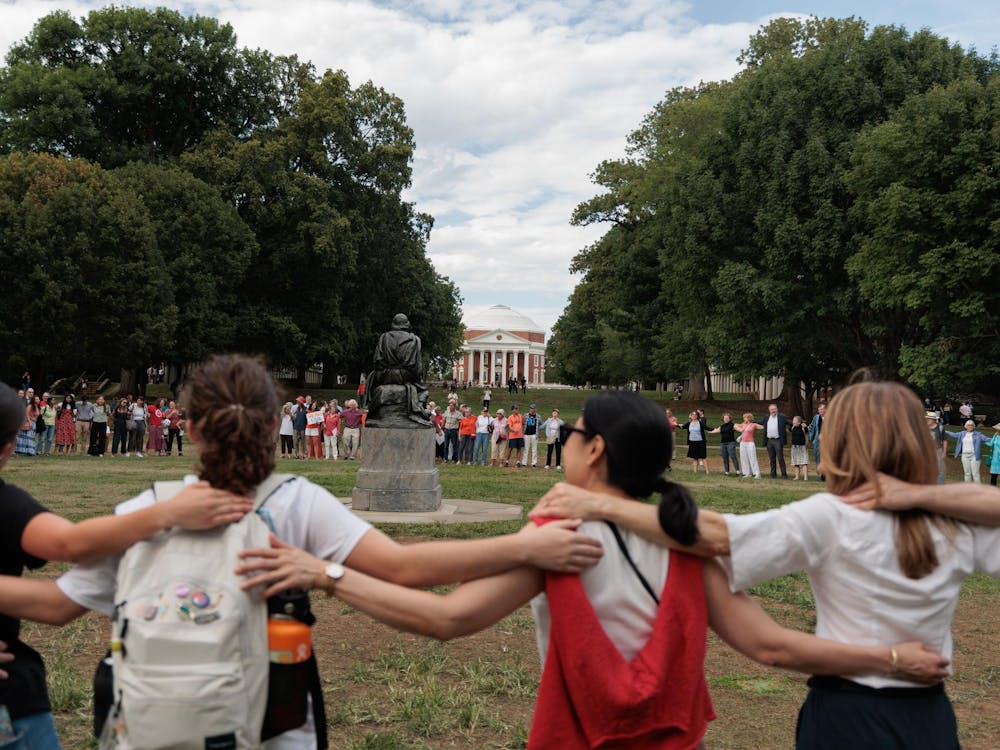Are you interested in why balls bounce and planes fly? Many students graduate from the University knowing the answers to these and other questions, all about "How Things Work."
Physics Prof. Louis A. Bloomfield established the introductory-level physics course that has "revolutionized the teaching of introductory physics for non-science majors," Physics Prof. Bascom Deaver said.
Bloomfield worked on a University committee in the late 1980s that reviewed area requirements for College students, and from that effort he developed the beginnings of PHYS 105 and 106: "How Things Work."
"I wanted to help the department, since we had very few students outside physics majors and grad students taking physics classes," Bloomfield said. "I had liked liberal arts courses in college, so why couldn't liberal arts students take science courses? I wanted to make it relevant - a good fraction of the students realize that physics matters in their daily lives.
"I got a grant in 1991 for a month during the summer from the school to design a new course - I had a little bit of a head start" in preparing, he said.
Bloomfield said he tries to incorporate everyday, practical items in his class, "starting out simple with falling balls, then on to the bicycle, airplane, violin" and creates demonstrations to go along with them.
Bloomfield started the class the fall of 1991 with 93 students. During the spring semester he had 260 students. Since 1991, between 6,000 and 7,000 students from all schools of the University have taken "How Things Work."
The course, currently offered in one 500-student section, fills up three classrooms and is shown on TV in two of the rooms. "How Things Work" is offered in the fall as PHYS 105 and PHYS 106 in the spring.
The spring class material focuses more on electronic materials, such as TV, flashlights and nuclear reactors.
Deaver said Bloomfield's teaching has had an impact within and beyond the University.
"With the publication of his book 'How Things Work' the impact of his work was extended throughout the U.S. and beyond," he said.
Deaver taught "How Things Work" for one semester while Bloomfield was on leave.
"My experience in teaching the course, following his lead as closely as I could, was that students who take the course at all seriously learn a lot of physics," he said.
Many of Bloomfield's students said his dedication and hard work helped them understand concepts of physics.
Second-year Education student Kate Polito talked about Bloomfield's commitment to making sure his students understood the material.
"I don't think I've ever had a professor more interested in what he teaches," Polito said. "He was genuinely concerned for students and wanted to foster the best possible understanding of the subject matter."
Fourth-year College student Corinne Epperly described some of the lengths Bloomfield would go to illustrate physics concepts.
"From hanging from the rafters, climbing on chairs, and exploding various objects - Lou Bloomfield made sure that he conveyed how thrilling science can be," Epperly said.
From his class's web site Bloomfield answers physics-related questions for both his students and the general public.
"I kept up with it for a while, then I found myself spending whole Saturdays and Sundays with it," Bloomfield said.
Over 14,000 unanswered questions wait in his inbox, and he has answered 1,500 questions already, even some from Ireland.
Bloomfield said his specialty is atomic, molecular and optical physics. However, since 1991 he has not taught any other classes besides "How Things Work."
Bloomfield's work has not gone unrecognized.
A year and a half ago the State Council for Higher Education of Virginia awarded Bloomfield the Outstanding Faculty Award, which they award to 11 university and college faculty in the state.
And in 1992, Bloomfield won the Alumni Board of Trustees Young Teachers Award.
Despite his success teaching physics, Bloomfield actually planned for a career in medicine when he enrolled at Amherst College as an undergraduate.
"I majored in physics because I liked the professors there better, but I still intended to do medicine and do an MB/Ph.D in computer science at Johns Hopkins University," Bloomfield said.
"I applied to a couple of physics [graduate] schools in part to please the physics faculty at Amherst," he said. "They wrote letters of recommendation for me, and they must have been good because I got in everywhere."
Bloomfield went to Stanford in 1979 for his Ph.D in physics, with a grant from the National Science Fellowship.
After that he worked for Bell Labs for two years during his post-doctoral fellowship and then came to the University in 1985.
Bloomfield served on the Faculty Senate for three years, and last year he was the chairman of the Senate's Research and Scholarship Committee.






